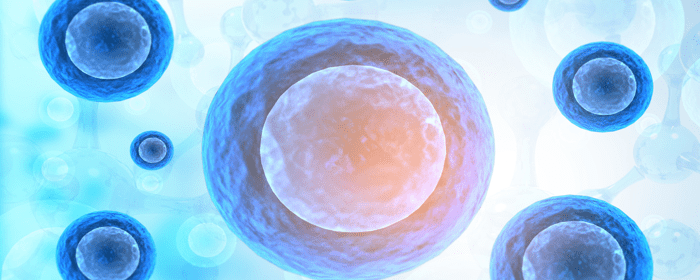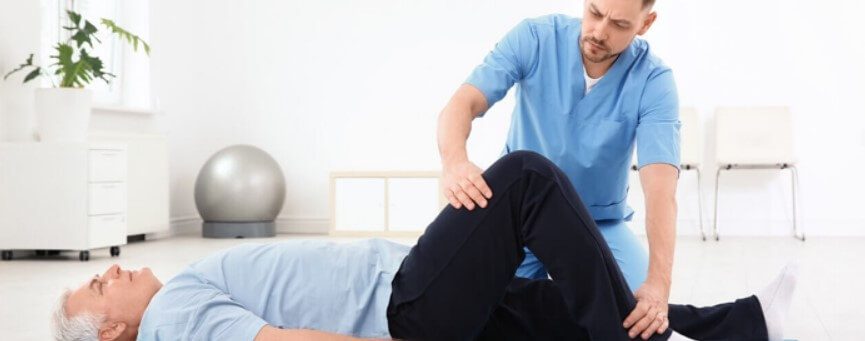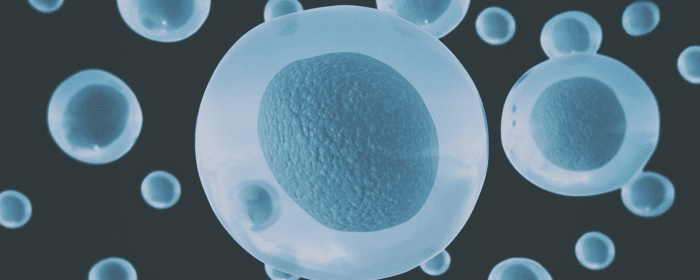
by admin | Feb 8, 2024 | Osteoarthritis, Mesenchymal Stem Cells, Stem Cell Research, Stem Cell Therapy
Osteoarthritis (OA) is the most common form of arthritis and occurs as a result of the protective cartilage, found on the ends of the bones, degenerates over time. While OA can occur in any joint, it is most commonly found to occur in the hands, hips, spine, and knee.
An estimated 365 million people worldwide are currently living with some form of knee OA. Although there have been improvements in conventional treatment methods that have shown some benefit, there is no therapy or drug that can prevent or treat the development of OA in the knee.
Recent phase I/II trials using mesenchymal stromal cells (MSCs) derived from bone marrow (BM) and adipose tissue have demonstrated the feasibility, safety, and clinical and structural improvements in focal or diffuse disease.
Considering the findings of these phase I/II trials, Orrego et al. conducted this study to better assess the safety and efficacy of the intra-articular injection of single or repeated umbilical cord-derived (UC) MSCs in knee OA.
The target population of this study was individuals between the ages of 40-65 with symptomatic knee pain for at least 3 months with grade 1-3 Kellgren-Lawrence radiographic changes in the targeted knee, without meniscus rupture.
The authors divided participants of this study into three specific groups, a control group which received intra-articular knee injections of hyaluronic acid (HA) at baseline and 6 months; the MCS-2 group, which received UC-MSCs at baseline and 6 months; and the MSC-1 group, who received UC-MSCs at baseline followed by placebo injection at 6 months.
At the conclusion of this study’s 12 months follow-up period, Orrego et al. found that the group with repeated UC-MSC intra-articular injections, or MCS-2, experienced significant clinical changes in total WOMAC, pain component, and VAS when compared with the control group. The authors also found that only patients in the MSC groups experienced significant amelioration of pain and disability at 6 and 12 months. The authors also reported no safety signals were detected in the experimental groups as compared with the HA controls.
Considering these findings, the authors conclude that the use of MSCs produces anti-inflammatory properties in response to tissue damage or inflammation that demonstrates suppressive effects on the maturation of dendritic cells, macrophages, Natural Killer, and cytotoxic T-lymphocytes.
While these results appear promising, the authors point out that even if all MSC trials report a good safety record and improvements in cartilage quality, the use of autologous cell therapy does come with some limitations. Among these limitations include a dramatic decline of bone precursor cells when these cells are derived from bone marrow. Studies have also shown reduced chondrogenic activity of MSCs in cultures obtained from individuals with advanced forms of OA. For these reasons, and considering the findings in this study, the authors highlight that allogeneic sources of MSCs have been shown to express superior clonogenicity, migration, and paracrine capacities.
The authors conclude that the repeated UC-MSC dose strategy utilized in this study led to a favorable safety profile and improved clinical results for the treatment of long-term pain in knee OA patients.
Source: Jose Matas, Mario Orrego, Diego Amenabar, Catalina Infante, Rafael Tapia-Limonchi, Maria Ignacia Cadiz, Francisca Alcayaga-Miranda, Paz L. González, Emilio Muse, Maroun Khoury, Fernando E. Figueroa, Francisco Espinoza, Umbilical Cord-Derived Mesenchymal Stromal Cells (MSCs) for Knee Osteoarthritis: Repeated MSC Dosing Is Superior to a Single MSC Dose and to Hyaluronic Acid in a Controlled Randomized Phase I/II Trial, Stem Cells Translational Medicine, Volume 8, Issue 3, March 2019, Pages 215–224, https://doi.org/10.1002/sctm.18-0053

by Stemedix | Feb 5, 2024 | Stem Cell Therapy, Age Management, Erectile Dysfunction, Health Awareness, Regenerative Medicine, Stem Cell Research
In the United States, about 30 million men have some form of erectile dysfunction, according to research conducted by the National Institute of Diabetes and Digestive and Kidney Diseases. Erectile dysfunction can occur in men of any age, though it’s most common in those who are older. Despite this, it’s not a normal part of aging. There are many causes of erectile dysfunction, from emotional to physical. However, most people are unaware of a few risk factors that could affect your chances of developing this condition.
Understanding Erectile Dysfunction
Erectile dysfunction is a condition in which you are not able to get or maintain an erection firm enough for sexual intercourse. It can be a long-term or short-term problem.
There are a few types of erectile dysfunction. One type is vascular erectile dysfunction, which results from issues with the blood vessels that send blood to the penis or the valves that hold blood. This is the most common form of erectile dysfunction.
Neurogenic erectile dysfunction occurs as a result of nerve problems that stop signals from traveling from your brain to your penis. It can occur after trauma, radiation therapy, or conditions like spinal stenosis and multiple sclerosis.
Hormonal erectile dysfunction occurs when you experience testosterone deficiencies, while psychogenic erectile dysfunction involves psychological causes.
Surprising Risk Factors for Erectile Dysfunction
Most men are aware that blood pressure issues, antidepressants, and even drinking alcohol can cause erectile dysfunction. Still, there are some surprising factors that can make your chances of dealing with this problem more likely.
1. Sleep Apnea
Sleep apnea is a condition in which your breathing stops and restarts many times as you sleep. This irregularity leads to poor rest. Scientists have noticed that men who have sleep apnea have a higher risk of developing erectile dysfunction.
The reason is not entirely clear, but it could be because the lack of sleep leads to dips in testosterone levels. Sleep apnea also restricts oxygen. Testosterone and oxygen are both crucial for maintaining healthy erections.
Sleep apnea also leads to fatigue and potentially higher stress levels, all of which impact sexual function. Scientists have found that treating obstructive sleep apnea can also help erectile dysfunction symptoms.
2. High Cholesterol
Having high blood cholesterol levels could also put you at a higher risk of developing erectile dysfunction. Perhaps the most common cause is the narrowing of blood vessels, also called atherosclerosis. High cholesterol levels can make this more likely to occur.
Cholesterol is a fat-like substance in the blood that your cell membranes need and that helps produce certain hormones, bile acids, and vitamin D. At high levels, however, cholesterol builds up in artery walls and causes plaque, which narrows them.
When that occurs, your penis doesn’t receive the amount of blood it needs to get and maintain an erection.
3. Cycling
Although maintaining an active lifestyle tends to help with erectile dysfunction, cycling could be causing more harm than good.
Hard bicycle seats often press on the perineum, which is the area between the scrotum and the anus, causing a compression of blood vessels. The compression makes it more difficult for the penis to get the needed blood flow.
Scientists recommend using a softer seat or taking shorter rides to prevent the problem. Make sure to speak with your doctor about this if you suspect cycling could be causing erectile dysfunction issues.
4. Canned Foods
Perhaps one of the most surprising risk factors of erectile dysfunction is the frequent eating of canned foods. Cans that hold food often contain the chemical bisphenol-A, also called BPA. BPA can affect your hormones, stimulating the production of female sex hormones and suppressing male sex hormones.
5. Certain Medications
Lots of medications have the potential to affect sexual function, especially in men. This is because they can interfere with hormone pathways.
One of these types of medications is selective serotonin reuptake inhibitors (SSRIs). These medications are antidepressants that function by increasing the levels of serotonin in the body, elevating your mood. The problem is that serotonin decreases sex drive.
Blood pressure medications may also affect sexual function. Diuretics or ACE inhibitors decrease the blood flow that reaches the penis, making an erection more difficult to achieve.
Other medications that could affect sexual function are those that treat Parkinson’s disease, antihistamines, and even non-steroidal anti-inflammatory disease. It is always a good idea to speak with your doctor about the side effects of any medications you take and to work with them to find alternatives.
6. Leading a Sedentary Lifestyle
Another factor that can put you at risk of developing erectile dysfunction is leading a sedentary lifestyle. Being sedentary can cause decreased blood flow. Not leading an active life also makes it harder for your heart to function at its best.
Even moderate exercise stimulates your body to produce nitric oxide, which is a short-lasting chemical that keeps your arteries open, including the ones that allow blood to flow into your penis.
A sedentary lifestyle is associated with higher levels of fat in the body. The more fat you have, the more estrogen your body is likely to produce, which means your testosterone levels dip. It can also lead to a higher risk of developing diabetes, which impacts insulin resistance and makes the development of erectile dysfunction more likely.
Treating Erectile Dysfunction
Struggling with erectile dysfunction can affect your self-esteem, moods, and relationships. If you are dealing with this issue, it’s essential to reach out to your doctor for help.
One option that offers the chance to get relief from erectile dysfunction is regenerative medicine. Regenerative medicine treatments like stem cell therapy focus on doing more than just treating the symptoms of the condition: they can help to treat the underlying problem that led to erectile dysfunction issues in the first place.
If you are dealing with erectile dysfunction, consider asking your doctor about regenerative medicine. With these minimally invasive treatments, you could allow your body to start healing itself.

by admin | Feb 1, 2024 | Psoriasis, Mesenchymal Stem Cells, Stem Cell Research, Stem Cell Therapy
Characterized by scaly white or erythematous plaques, psoriasis is a chronic autoimmune dermatological disease most often appearing on the scalp, genitalia, lumbosacral area, and extensor surfaces of the limbs.
Affecting an estimated 125 million people worldwide, the condition most commonly is observed in those between the ages of 15 and 25 years of age.
The most recent advancements in the development of biological treatment have revolutionized the treatment of the condition for those with moderate to severe psoriasis, achieving clear or nearly clear skin with long-term success.
However, these treatments in their current form have not been proven to cure psoriasis completely. Additionally, a growing number of those suffering from severe psoriasis are not responding to these current therapeutic treatment options.
Recently, stem cell therapy, including regulatory T-cells, hematopoietic stem cell transplantation, and mesenchymal stromal cells (MSCs) have been used in patients with recalcitrant psoriasis. In this review, Naik discusses stem cell treatment options available for psoriasis.
Regulatory T-cells, or Tregs, regulate or suppress other immunocytes by modulating their responses to the endogenous environment and antigens, which helps to avoid autoimmune reactions and chronic inflammation. Several treatments for psoriasis, including many biologics currently being used, appear to increase the number of Tregs and their performance in patients with psoriasis. This finding led Naik to conclude that, despite their high cost, Treg-based therapies may have the ability to interfere with the pathogenesis of psoriasis.
MSCs have been found to have a significant role in adaptive immunity. This immune-enhancing activity typically occurs in partnership with a number of immune cells, including neutrophils, dendritic cells, monocytes, natural killer cells, macrophages, B-cells, and T-cells. While several Phase I and II studies have not demonstrated significant toxicity, the author calls for more extensive controlled trials to better understand the efficacy and long-term safety of MSCs in this application.
The favorable results observed when using hematopoietic stem cells (HSCT) in a wide range of autoimmune conditions, including lymphoma, leukemia, lupus, diabetes, rheumatoid arthritis, and multiple sclerosis, led to interest in using these cells in patients with psoriasis. Interestingly, improvements in psoriasis have been observed in patients who have undergone allogeneic (rather than autologous) HSCT, suggesting that hematopoietic stem cells could contribute as a primary cause of psoriasis.
Naik concludes that the application of stem cells in the treatment of psoriasis raises hope for the development of a safe and effective therapy for those suffering from severe forms of the condition. While more data is required before clinical application, MSCs could be a promising therapy for the treatment of psoriasis.
Source: Naik PP. Stem cell therapy as a potential treatment option for psoriasis. An Bras Dermatol. 2022;97(4):471-477. doi:10.1016/j.abd.2021.10.002

by admin | Jan 31, 2024 | Mesenchymal Stem Cells, Stem Cell Research, Stem Cell Therapy
Acute and chronic pancreatitis are associated with local and systemic inflammation that is linked to a host of serious health issues. A result of the digestive juices and enzymes attacking the pancreas, pancreatitis currently has no definite treatment.
Currently, it is estimated that over 6 million people worldwide are afflicted by acute or chronic pancreatitis with the number of diagnoses appearing to be steadily increasing.
The rising interest in stem cell therapy being used to potentially treat a wide variety of other diseases has led to interest in exploring it as a way to aid in the treatment of both acute and chronic pancreatitis.
As part of this review, Chela et al. examine numerous studies using commonly used stem cells to explore their promise in the treatment of pancreatitis.
A number of studies are utilizing stem cells to repair and replace tissue damaged as a result of numerous gastrointestinal diseases, including acute and chronic pancreatitis. In the case of using stem cells, and specifically mesenchymal stem cells (MSCs), to treat pancreatitis, researchers are interested in the ability of these stem cells to regenerate damaged cells and to influence the immunological and inflammatory response resulting from this condition.
A significant issue that has stymied progress in the ability of the pancreas to self-repair and regenerate when affected by pancreatitis is the perceived lack of stem cells found specifically in the tissue of the pancreas. While there has been conflicting research into whether or not stem cells exist in pancreatic tissue, the research reviewed by the authors indicates that there appears to be a tiny amount of stem cells located within pancreatic tissue.
Considering this and considering that additional research indicates that other stem cells found in the pancreas appear to originate from bone marrow (BM), the authors believe the ability of MSCs’ ability to differentiate will support the healing of the pancreas; these include stem cell sources from BM, adipose tissue, umbilical cord, and induced pluripotent stem cells (iPSCs).
Source: “Stem cell therapy: a potential for the perils of pancreatitis – PMC – NCBI.” https://www.ncbi.nlm.nih.gov/pmc/articles/PMC7433995/.

by Stemedix | Jan 29, 2024 | Parkinson's Disease, Lyme's Disease, Osteoarthritis, PRP, Regenerative Medicine, Stem Cell Therapy, Stroke
Orthopedic rehab is a type of rehabilitation designed to help people who have been injured, had surgery, or have degenerative conditions. Its goal is to aid patients in regaining mobility, balance, and function in their musculoskeletal system. Orthopedic rehab also focuses on finding ways to alleviate pain.
If you have suffered an injury or gone through surgery, or if you have a degenerative condition that affects your mobility, orthopedic rehab could be the right option for you. But what can it help with, and what can you expect from the process?
What Conditions Can Orthopedic Rehab Help With?
Orthopedic rehab is a conservative treatment that can benefit patients of all ages who are suffering from issues that affect their range of motion, joint flexibility, muscle strength, and body function.
It can help with conditions like:
- Joint pain
- Arthritis
- Parkinson’s disease
- Lyme disease
- Scoliosis
- Stroke
- Spinal stenosis
- Knee instability
- Carpal tunnel
- Osteoporosis
- Sciatica
This type of rehab is usually essential for those recovering from joint replacement surgeries and similar procedures. It can also help with pelvic floor issues.
Orthopedic physical therapy is important after certain surgical procedures, including those like:
- Knee replacement
- Rotator cuff replacement
- Knee arthroscopy
- Hip replacement
- Cancer surgery
- Heart surgery
This type of rehab can help to normalize your gait, improve your range of motion, and even prevent excessive scar tissue buildup.
It’s also helpful for people who’ve suffered a chronic injury. A chronic injury is damage that occurs over time, generally because of small movement patterns that lead to repetitive injuries to your bones, joints, or tendons. Tennis elbow or carpal tunnel are examples. With rehabilitation, you can learn how to move without injuring yourself.
Benefits of Orthopedic Therapy
Orthopedic therapy helps increase your mobility. Mobility can be limited after an operation, while recovering from an injury, or when dealing with degenerative diseases. This type of therapy utilizes stretching and exercise strategies to slowly increase your range of motion.
Orthopedic therapy also helps with pain management so that you don’t have to rely as much on pain medications. Therapists can massage the treatment area, increasing circulation and decreasing inflammation. Some orthopedic therapy options use ice packs for dealing with inflammation and heat packs for loosening tension.
Better blood circulation, which orthopedic therapy helps with, also brings oxygen and nutrients to the treatment area. This makes it easier for injuries to heal.
You can also help avoid re-injuring yourself. Therapy assists by teaching you to move safely while also showing you how to gain strength in the area.
Types of Treatments Offered in Orthopedic Therapy
When you turn to orthopedic therapy, you can benefit from a few different types of treatments.
Hot and Cold Therapy
Orthopedic therapy often relies on thermotherapy (heat therapy) and cryotherapy (cold therapy) to treat musculoskeletal swelling and pain.
E-Stim
Electrical stimulation can help diminish pain. With E-stim, your therapist attaches a device to the treatment area. The two main types of devices they may use include TENS, which uses low-voltage electrical currents to offer pain relief, and NMES, which sends electrical impulses to the nerves.
Exercise Therapy
You will get an exercise plan that helps you increase mobility, strength, and balance. You will get a chance to practice them with the therapist so that you can then repeat them at home.
Soft Tissue Manipulation
Soft tissue manipulation is a kind of manual physical therapy in which your physical therapist massages your ligaments, fascia, and muscles. It helps optimize muscle function while also decreasing tension. It may also be effective at improving blood circulation.
Laser or Light Therapy
Low-level lasers and light therapies can help with muscle performance. They have the potential to reduce muscle fatigue and help tissues repair after an injury.
Platelet-Rich Plasma Therapy
Platelet-rich plasma (PRP) therapy uses the growth factors in your blood to encourage healing at the treatment area. It’s an option that often complements other orthopedic therapies.
What an Orthopedic Rehab Plan Can Look Like
The orthopedic plan your healthcare provider recommends will consider your injury, overall health, abilities, and goals. You will have a personalized and unique program that your team can adjust as you progress through it.
The first step is to determine whether you can benefit more from an inpatient or outpatient orthopedic rehab program. In more complex situations, inpatient care is usually the right choice, while outpatient options are better suited for minor injuries.
Most patients start each rehab session with physical therapy. These sessions can last between 30 and 60 minutes. Those with more serious issues can begin lying on an exam table while the therapist performs some passive exercises. You may then have to perform the same exercises on your own.
Your therapist may then continue to show you more stretches and exercises to incorporate into your home routine. Some of the exercises may even rely on weights or bands.
Orthopedic rehab also focuses on helping patients perform everyday tasks. If you have trouble walking, the session can involve relearning how to do this correctly to avoid falls and further injuries. If you have had a joint replacement, you may relearn to walk with the support of the therapist before moving on to walkers and other devices.
Patients who need to improve grip strength will likely spend a significant amount of time in the session practicing grabbing things of increasing weight.
For patients who have degenerative diseases, balance exercises are particularly useful. They can help the patient better understand where their body is in space. Some of these exercises can include standing on one foot and raising or lowering a foot or knee.
Getting the Care You Need
Orthopedic rehab offers the chance to regain your strength, balance, range of motion, and more after suffering an injury or going through surgery. It is also useful in the process of managing degenerative diseases like Parkinson’s.
By combining various types of therapies, including PRP therapy, you have the chance to get relief from pain while also preventing future injuries.

by admin | Jan 25, 2024 | Spinal Cord Injury, Mesenchymal Stem Cells, Stem Cell Research, Stem Cell Therapy
Spinal cord injury is a global term used to capture damage to the spinal cord resulting from trauma (typically in the form of car accidents, falls, or work-related injuries) or from disease or degenerative conditions.
Worldwide, it is estimated that up to 500,000 people suffer some type of spinal cord injury (SCI), with most resulting from car accidents, falls, or violence. The World Health Organization reports that people suffering from SCI are between two and five times more likely to die prematurely as a result of this injury.
To date, there have been limited advances in therapeutic treatment or correction related to SCI, with any therapeutic development focused on treatment of SCI-related symptoms as opposed to the condition itself.
In this study, Muthu et al. analyze evidence of the efficacy and safety of mesenchymal stem cell (MSC) therapy in human subjects with traumatic SCI and identify the therapy’s potential for the future management of SCI.
To analyze this evidence, the authors identified and reviewed studies evaluating the efficacy and safety of stem cell therapy for SCI. Specifically, Muthu et al. screened 321 research articles before narrowing this study down to 66 full-text reviews and finally identifying 19 studies that fit the criteria for this review.
These 19 studies involving 670 subjects demonstrated that those in the identified intervention groups showed statistically significant improvement in key measurement criteria, including the American Spine Injury Association (ASIA) impairment scale grade improvement, ASIA sensorimotor score, activities of daily living score, residual urine volume, bladder function, light touch, and pinprick response.
The authors also found that while no significant difference was noted in motor score or activities of daily living scores, and that the intervention group has significant increase in complications, no serious or permanent adverse events were reported.
Considering these findings, Muthu et al.’s analysis establishes the efficacy and safety of MSC transplantation in the specific areas highlighted above (improvements in AIS grade, ASIA sensory score, and bladder function) without major adverse events. The authors also call for further research to better understand standardized dosing, time, route of administration, and source of MSCs used for transplantation.
Source: Muthu S, Jeyaraman M, Gulati A, Arora A. Current evidence on mesenchymal stem cell therapy for traumatic spinal cord injury: systematic review and meta-analysis. Cytotherapy. 2021 Mar;23(3):186-197. doi: 10.1016/j.jcyt.2020.09.007. Epub 2020 Nov 9. PMID: 33183980.







 St. Petersburg, Florida
St. Petersburg, Florida
